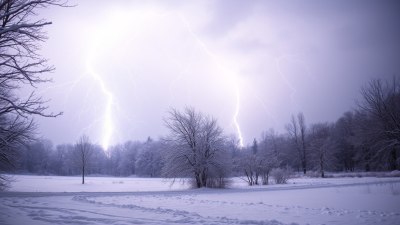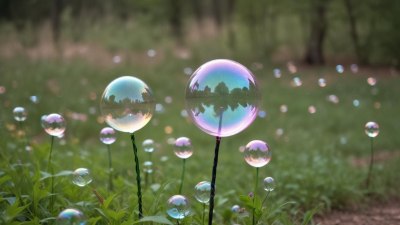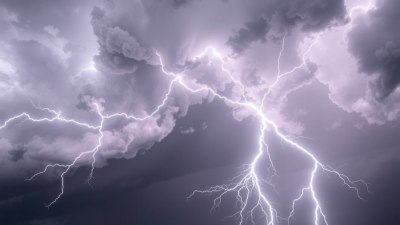Why The Wind Always Enters Dramatically, Like a Theater Kid
Explore why the wind sounds so dramatic, akin to a theatrical entrance, and its impact on our senses and environment.

Image by rawpixel-com on Freepik
Have you ever noticed how the wind sometimes bursts forth with the flair of a seasoned actor taking the stage? It doesn’t simply arrive; it enters dramatically, with a whoosh, a howl, or a sudden gust that captures attention. This almost theatrical presence of the wind has fascinated poets, scientists, and everyday observers alike. But why does the wind always seem to make such a dramatic entrance, as if it’s a theater kid eager to steal the spotlight? To understand this phenomenon, we must delve into the nature of the wind itself, its interactions with the natural environment, and the way our senses perceive it.
The Nature of Wind: Invisible, Yet Audible
Wind, at its core, is air in motion. The atmosphere around us is filled with air particles—molecules of nitrogen, oxygen, and other gases — that are constantly moving, but when these move en masse from one place to another, we experience wind. Since air is invisible, the movement of these particles can only be sensed through indirect means: the rustling of leaves, the swaying of branches, or the cooling effect on our skin. What gives the wind its dramatic flair is not sight but sound and sensation.
Sound waves are created when air molecules move and collide, propagating pressure changes through the environment. In calm conditions, such sounds are minimal. But when wind gains strength, it disrupts and interacts with objects around it, producing a range of sounds from soft whispers to thunderous roars. This acoustic signature of the wind is what often makes its arrival so noticeable and, dare we say, theatrical.
How Wind Interacts with the Environment
Wind does not travel in isolation; its movement is shaped by the geography and structures it encounters. When wind hits objects like trees, buildings, mountains, or even narrow alleyways, it is forced to divert, accelerate, or create turbulence. These interactions amplify the noise of the wind dramatically.
For example, when wind squeezes between narrow spaces — a situation known as the Venturi effect — its speed increases, often producing a sharp whistle or howl. This is the equivalent of a theater kid stepping into a spotlight, raising their voice to be heard amidst the crowd. Similarly, leaves and branches are stirred, creating a rustling that adds to the symphony. The cumulative effect is a multifaceted, dramatic entry rather than a simple breeze.
The Physics Behind Wind’s Dramatic Sounds
The drama of the wind’s sound lies deeply rooted in the physics of fluid dynamics and acoustics. Wind is a turbulent flow rather than a laminar one in most real-world contexts. Turbulent air does not move in smooth, orderly layers but instead in chaotic patterns with vortices and eddies. These air movements can cause fluctuations in pressure and velocity that translate into the variable, sometimes intense sounds we associate with dramatic wind.
Moreover, when this turbulent air encounters solid surfaces, it can create vibrations or oscillations. These vibrations produce sounds that can range from a low rumble to a piercing shriek. For instance, stringing wires, chimneys, or even leaves on a tree can act as vibrating membranes that magnify these sounds, much like instruments in an orchestra highlighting a dramatic scene.
Comparing Wind to a Theater Kid
Why liken wind’s entrance to a theater kid? Theater kids are known for their flair, their exaggerated body language, and their desire to command attention when they enter a room. They are often loud, expressive, and ready to make an impact immediately. Wind, through its sudden gusts, changes in sound, and tactile sensations, performs a very similar role in nature.
Consider how a quiet day is suddenly interrupted by gusts that cause noises and vibrations—these moments are analogous to a dramatic entrance that pauses the environment and commands notice. The wind’s unpredictable fluctuations add an element of surprise and intensity that makes its presence impossible to ignore.
The Role of Human Perception in Wind’s Dramatic Entrance
Humans are particularly sensitive to changes in their environment, especially unexpected sensory stimuli. The sudden arrival of wind can disrupt focus and create heightened alertness. Our auditory system is wired to detect movement and changes in sound because, evolutionarily, such changes could indicate approaching danger or vital environmental changes.
This heightened perception amplifies the drama of the wind. A sudden gust coming through an open window can make a scene feel charged or even eerie—think of how wind is used in film and theater to create mood and suspense. Our brains enrich the experience, assigning emotions and intentions to what is essentially random air movement, further enhancing that “theater kid” quality.
Environmental and Cultural Symbolism of Wind’s Drama
Across cultures and history, wind has frequently been personified and attributed with emotional qualities. From the ancient Greeks considering wind as deities—like Boreas, the North Wind—to literary works depicting wind as a messenger or harbinger, the dramatic nature of wind has long been a source of inspiration. This cultural backdrop influences our perception, making us more prone to interpret wind’s noisy entrances as meaningful events, rather than just natural phenomena.
Additionally, natural events such as storms and hurricanes exemplify the wind’s power and unpredictability, reinforcing its dramatic and sometimes fearsome reputation. Stories, myths, and music often capitalize on these attributes, embedding the idea of the wind as a theatrical presence deep within human consciousness.
Wind’s Dramatic Entrance in Urban vs. Natural Settings
The way wind makes its entrance can vary significantly between urban spaces and natural landscapes. In cities, tall buildings create wind tunnels and amplify sounds like whistles and howls, making the wind’s presence more pronounced and sometimes startling. Street corners can become stages where wind puts on its show, rattling trash cans or flipping newspaper pages with flair.
In natural settings, wind may enter more subtly or dramatically depending on terrain. Open plains might experience steady, sweeping gusts, while mountainous areas can make the wind roar through valleys and cliffs with intense acoustics. Forests can accentuate the rustling and cracking sounds as wind moves through dense foliage. Each environment shapes the wind’s dramatic character differently.
Psychological Impact of Experiencing Dramatic Wind
There is a deep psychological response elicited when we encounter dramatic gusts of wind. Sudden changes in the environment can trigger feelings ranging from thrill and exhilaration to nervousness or dread. The sudden whoosh of wind can elevate heart rates momentarily, heightening emotional states. This response ties back to our evolutionary history where awareness of environmental changes was crucial to survival.
The sensation of dramatic wind can also evoke introspection or creativity. Many artists, writers, and musicians cite windy days as times when inspiration strikes strongest, possibly because the sensory stimulation primes the mind for novel ideas or emotional clarity. The theatrical nature of wind thus extends beyond just a physical phenomenon into an experiential and emotional landscape.
Wind Instruments and the Sonic Parallel
Interestingly, humans have taken inspiration from the sounds of wind in creating musical instruments—particularly wind instruments like flutes, clarinets, and trumpets. These instruments rely on air movement to produce sound, often with dynamic changes in volume and pitch that mimic the natural variability of wind.
Listening to a skilled wind instrumentalist, we can recognize the same dramatic qualities: bursts, crescendos, and fluctuations that demand attention and convey emotion. The wind’s natural sonic presence seems to have influenced our musical culture profoundly, reinforcing the analogy of the wind as a performer.
How Weather Patterns Influence Wind’s Theatricality
The atmosphere’s large-scale patterns play a critical role in how wind behaves and how dramatically it makes its presence known. Low-pressure systems, fronts, and jet streams can cause sudden changes in wind speed and direction. The clash of air masses often results in gusty, turbulent wind that makes an unmistakable impact upon arrival.
During storms or squalls, the wind’s entry is nothing short of theatrical: sudden gusts, whirling debris, and a roar that commands immediate attention. Conversely, during calm days, even a slight breeze carrying a soft rustle can feel like an intimate performance. These patterns demonstrate that wind’s dramatic flair is partly a product of atmospheric dynamics, varying across weather systems.
The Science of Wind Gusts and Sudden Changes
One important aspect behind the dramatic nature of wind is the physics of gusts. A gust is a brief increase in the wind’s speed, often caused by the turbulent mixing of air layers with different temperatures and speeds. Meteorologically, gusts are categorized as sudden and short-lived wind increments that can be much stronger than the average wind speed.
The sudden onset of gusts contributes to the sensation of drama: a calm day can be interrupted by an unexpected rush of air, creating noises and movements which catch our attention. Gusts amplify the wind’s presence, making it feel like an unpredictable actor bursting onto the stage, disrupting the scene with energy and flair.
Wind Noise Optimization and Its Practical Implications
Our fascination with the wind’s dramatic sounds isn't just cultural or psychological; it has practical roots as well. Engineers and builders design structures with wind noise in mind, trying to minimize unwanted whistling or howling that can cause discomfort or even damage. Conversely, some wind-related constructions are designed to harness wind energy, where understanding its dynamic and often dramatic nature is essential.
For instance, the design of wind turbines takes into account the fluctuating and sometimes turbulent character of wind to optimize energy capture. Similarly, airports and highways are located considering prevailing wind patterns to minimize noise and safety hazards. The recognition that wind can enter dramatically informs many safety and engineering practices.
Children’s Perception: Wind as a Storyteller
From a developmental psychology perspective, children often impart personalities and narratives to natural phenomena like wind. The dramatic entrance of the wind is frequently interpreted as a character making an entrance, telling a story, or setting a scene. This anthropomorphism is a natural part of human cognition but also highlights how the wind’s theatricality sparks imagination.
Stories, games, and even lullabies often incorporate the wind as a lively character, sometimes a prankster, protector, or messenger. This further entrenches the idea of wind as a performer in our cultural consciousness, starting from a young age.
Scientific Experimentation: Visualizing Wind’s Drama
Scientists have developed fascinating ways to visually capture wind’s dramatic nature. Smoke, ribbons, or lightweight particles are often used to trace wind patterns and reveal its turbulent, swirling character. High-speed cameras and laser-based measuring devices help reveal how gusts form and interact with obstacles, making the invisible visible.
These experiments show that the wind’s force and movement are anything but uniform or predictable. Instead, they demonstrate a dynamic dance of air currents, eddies, and oscillations that correlate with the drama we perceive. Visualizing the wind helps deepen our appreciation for its complex and captivating behavior.
Conclusion on the Wind’s Dramatic Nature
In summary, the reason why the wind always enters dramatically, like a theater kid, lies in a confluence of physical phenomena, environmental interactions, human perception, and cultural symbolism. Wind is an invisible force that communicates through sound and sensation, often unpredictably and with variation. Its interaction with landscapes, structures, and weather patterns creates turbulence and noise that command attention.
The theatrical analogy fits well because wind’s bursts and gusts interrupt normalcy, much like an actor stepping boldly into a scene. This dramatic entrance is heightened by our sensory responses and the stories we tell about natural forces. The wind’s flair for the dramatic is inherent in its very nature, gifted by physics and magnified by human experience.
Next time you feel that sudden gust or hear the wind’s distinctive howl through a gap in a window, imagine it as a performer stepping into the spotlight, making its presence undeniably known with passion, unpredictability, and flair.











